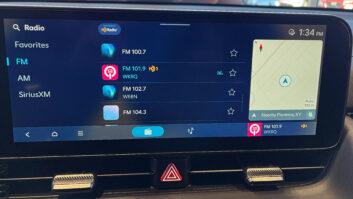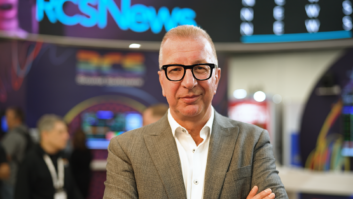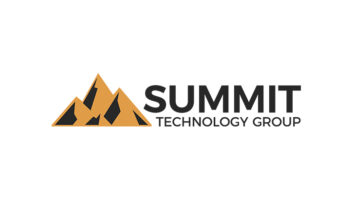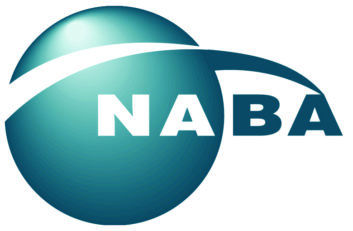 The realm of radio broadcasting is being affected drastically by the migration to digital delivery of information and entertainment content. Now a new white paper to be delivered at NAB Show will address the significant opportunities and challenges the digital world presents to terrestrial radio. It will include recommendations about digital radio, hybrid radio and metadata.
The realm of radio broadcasting is being affected drastically by the migration to digital delivery of information and entertainment content. Now a new white paper to be delivered at NAB Show will address the significant opportunities and challenges the digital world presents to terrestrial radio. It will include recommendations about digital radio, hybrid radio and metadata.
The North American Broadcasters Association, in partnership with NAB, has scheduled its Future of Radio and Audio Symposium as a part of the Broadcast Engineering and Information Technology Conference.
The document, titled “Value Proposition of Radio in a Connected World,” takes a strategic look at the next generation of radio and will be discussed on Sunday April 7 at 10:45 a.m. in N258 of the LVCC North Hall. A group of panelists will give perspective on its recommendations.
[What’s on the Docket for NABA in 2019?]
Discussion will focus on the massive shifts digital is driving within traditional radio broadcasting, according to NABA, including the surging number of audio distribution platforms and how broadcast radio can capitalize on its strengths and avoid the pitfalls new technology can sometimes create.
VALUE PROPOSITION
The paper, prepared by NABA’s Next-generation Radio Working Group and posted to its website, is divided into main sections (e.g. Digital Radio, Non-Broadcast Content, Proximity and Listener Affiliation, Hybrid Radio, Metadata, Connected Car), and each section ends with NABA recommendations on a specific topic.
The paper considers how radio has defined itself, the shifting definitions of radio, and how the industry might consider future developments, according to NABA.
“The hope is that practitioners view this document as an information resource helping to make business and technical decisions. Members of NABA feel that radio, as a technology and industry, holds a strong market position and should capitalize on these strengths,” the group said in a statement.
It continued, “Members of NABA also feel radio as an industry must constantly consider strategic adjustments to continue holding a strong market position. Technology and market forces bring change. The radio industry should seek to stay vital by taking advantage of the changes, and not be content with entrenchment.”
Michael Beach, VP of distribution at National Public Radio, leads NABA’s Next-Generation Radio Working Group. Session panelists scheduled to appear include Samuel Sousa, senior advisor, streaming R&D at Triton Digital; Steve Newberry, EVP industrial affairs and special projects at NAB; and Dave Casper, SVP of digital services at RAB.
METADATA AND MORE
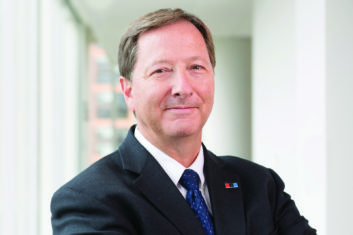
(Photo by Allison Shelley)
Beach, who oversees NPR’s Public Radio Satellite System, said the work group recommends stations offer audio to their listeners on as many platforms as possible to “grow audience and take advantage of cross-promotion opportunities.”
The paper identifies some of the main strengths of radio (localism, brand recognition, a public service for the community, reach, etc.), but Beach said the document is less a listing of the values of radio than a tool for stations and groups to use to think about and evaluate the best way forward.
The working group shared some of its opinions published in the paper with Radio World:
- Radio stations should strongly consider adopting HD Radio hybrid IBOC mode per the NABA position paper on a voluntary North American digital radio standard.
- Radio stations and station groups should participate with national and international organizations to help define what criteria to adopt to make the decision to go to an all-digital transmission.
- Management of radio stations and networks should immediately begin supporting internet-based content for use by hybrid radio receivers. Strong broadcaster support is vital for adoption of hybrid radio technology, especially with automakers.
- Radio stations should adopt best practice use of metadata per the documents developed by the National Association of Broadcasters.
Beach said data shows that adding static metadata increases listening time, and adding dynamic metadata increases listening time even more.
“If using dynamic metadata, it is the opinion of the work group that stations should experiment to understand the best refresh rate of text and graphics to get the best advantage of the content without distracting drivers,” according to the paper.
COMPETITIVE ADVANTAGE
The report also identifies advantages radio can lean on, including its professional content, brand recognition, reach, business sustainability and technical know-how.

Lawrence Galkoff, GM of Radioplayer Worldwide, said radio has to compete at all levels in order to maintain audience in the future.
“To me, digital distribution and the internet are the biggest game-changers in the radio industry since the invention of transistors. It’s a technological revolution. If radio is not in the digital space, it will lose listeners to the very many and growing options that are available,” Galkoff said.
He continued, “Radio needs to keep attracting new listeners. Younger people will not just find radio when they get older, they need to have it as part of their lifestyle from an early age so radio needs to be in the places that they go to for entertainment and we need to be strong enough to compete with all the other sources of entertainment that are available to them.”
Radioplayer, a collaborative radio aggregator, is available in eight countries in Europe.
Galkoff said his organization has found that if there is no metadata when listeners search for a station, they are likely to move on. “This extends to having great logos rather than providing big empty gaps on vehicle dashboards. Radio has to sound and look good.”
NABA is a nonprofit association of broadcasting associations in the United States, Canada and Mexico. It is headquartered in Toronto. This is its fourth Future of Radio and Audio Symposium; the previous three were standalone events for NABA members, held in Toronto, Washington and Mexico City.


